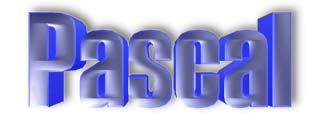

The Pascal programming language was originally developed by Niklaus Wirth, a member of the International Federation of Information Processing (IFIP) Working Group 2.1. Professor Niklaus Wirth developed Pascal to provide features that were lacking in other languages of the time. His principle objectives for Pascal were for the language to be efficent to implement and run, allow for the development of well structured and well organized programs, and to serve as a vehicle for the teaching of the important concepts of computer programming. Pascal, which was named after the mathematician Blaise Pascal, is a direct descendent from ALGOL 60, which Wirth helped develop. Pascal also draws programming components from ALGOL 68 and ALGOL-W. The original published definition for the Pascal language appeared in 1971 with latter revisons published in 1973. It was designed to teach programming techiques and topics to college students and was the language of choice to do so from the late 1960's to the late 1980's.
Pascal contains some significant language features that allow it to used as a powerful learning tool in introducing structured programming techniques to students :
The Prime area of application that Pascal entails is the learning environment. This language was not really developed to be used for anything other than teaching students the basics of programming, after all it was originally developed for this purpose. In the early 1970's to the early 1990's Pascal was the language of choice for most major colleges and universities for teaching college level programming techniques. Now with the growing popularity of Object Orient Programming Pascal has taken a back seat to other languages such as C++ and Visual Basic.
The author of this web page would like to thank his fellow classmates and instructors for their help in the compilation of this page.
![[Prev]](../prev_btn.gif)
![[Home]](../home_btn.gif)
![[Next]](../next_btn.gif)